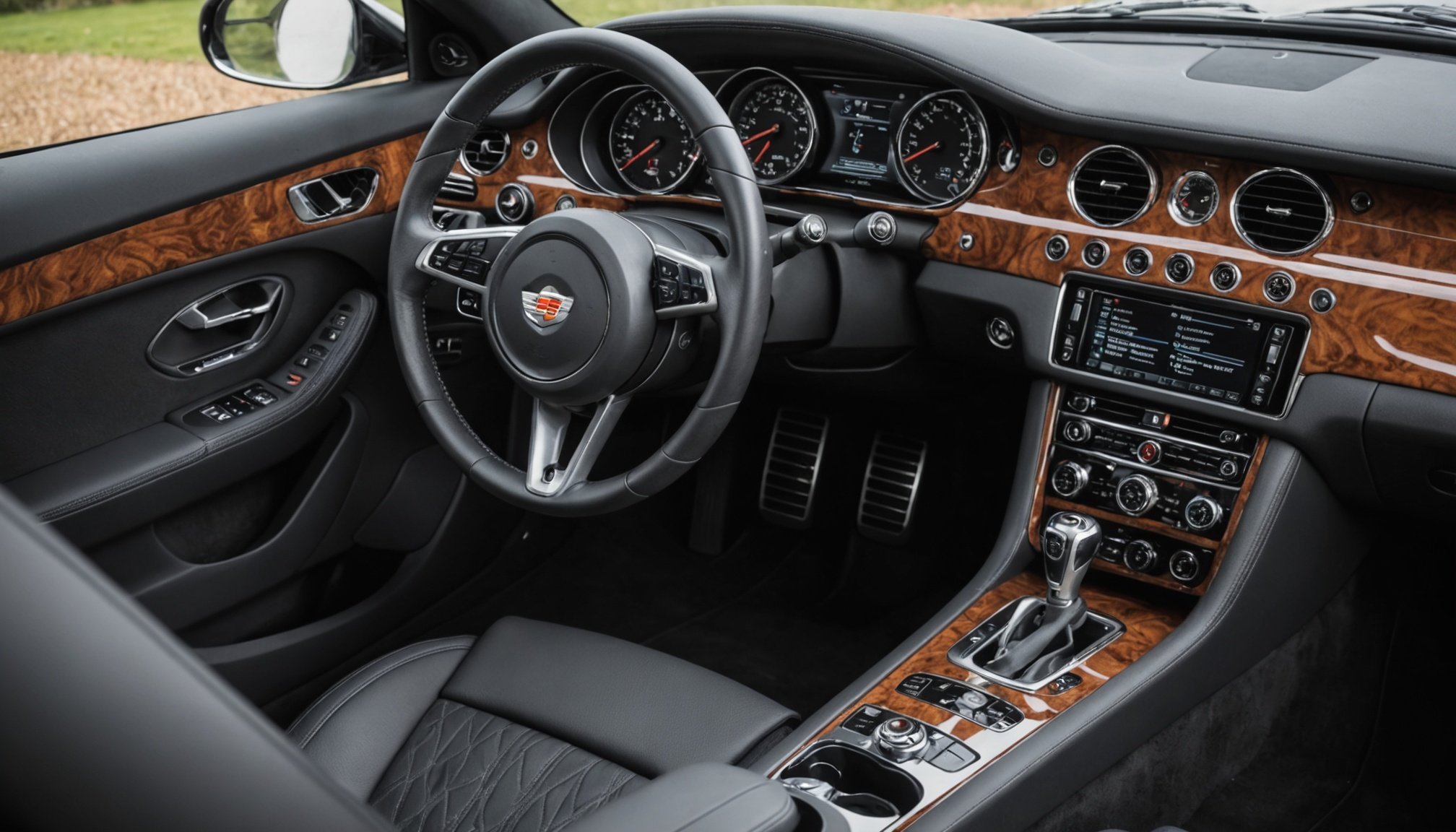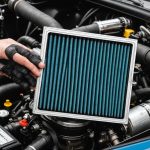Reducing Interior Vibrations in High-End British Cars: Ultimate Techniques for a Smoother Driving Experience
When it comes to high-end British cars, the driving experience is not just about speed and luxury, but also about comfort and tranquility. One of the key factors in achieving this is reducing interior vibrations and noise. Here, we will delve into the ultimate techniques for minimizing these disturbances, ensuring your driving experience is as smooth and enjoyable as possible.
Understanding the Sources of Vibrations and Noise
Before we dive into the solutions, it’s crucial to understand where these vibrations and noise come from. In a car, vibrations can originate from various sources, including the engine, transmission, road surface, and even the car’s own structural components.
Have you seen this : Revamping your british classic: the ultimate step-by-step blueprint for integrating a modern infotainment system
Engine and Transmission
The engine and transmission are significant sources of vibration. These vibrations can be transmitted through the car’s chassis and into the cabin, causing discomfort and noise.
Road Surface
The road surface plays a critical role in the amount of vibration and noise that enters the car. Potholes, uneven roads, and different types of road surfaces can all contribute to increased vibration.
In the same genre : Ultimate guide to installing a high-performance air filter in your british racing car: key steps for optimal performance!
Structural Components
The car’s structural components, such as the body and suspension, can also generate vibrations. These can be exacerbated by factors like wear and tear, or poor maintenance.
Effective Materials for Reducing Vibrations and Noise
The choice of materials is paramount in reducing interior vibrations and noise. Here are some of the best materials and techniques used in soundproofing and vibration damping.
Sound Deadening Materials
Materials like Dynamat SuperLite and ResoNix Fiber Mat are highly effective in reducing noise and vibration.
-
Dynamat SuperLite: This material is 30% lighter and 30% thinner than traditional sound deadening materials but still offers high efficiency in stopping noise and vibration. It is ideal for use in areas where weight is a concern but sound quality is crucial[4].
-
ResoNix Fiber Mat: This material absorbs and dissipates airborne noises and vibrations within the vehicle cabin. It is made from high-quality, non-woven polyester fibers engineered for optimal sound absorption and thermal insulation. The Fiber Mat is particularly effective in reducing rattles and road noise, making it a top choice for soundproofing[2].
Acoustic Foam and Panels
Acoustic foam and panels are designed to absorb sound waves, reducing the overall noise levels inside the car.
-
Acoustic Foam: This is commonly used in the headliner and door panels to absorb sound energy before it can resonate. It is particularly effective in reducing wind noise and midbass frequencies from door-mounted speakers[2].
-
Acoustic Panels: These panels can be placed in various areas of the car to absorb sound waves. They are often used in conjunction with sound deadening materials for maximum effect.
Techniques for Installation
The installation of these materials is just as important as the materials themselves. Here are some techniques to ensure you get the best results.
Planning the Installation
Before you start, it’s crucial to plan your installation carefully. Identify the areas where noise and vibration are most prevalent and prioritize those.
-
Headliner: The headliner is one of the most common locations for sound absorption. Use materials like ResoNix Fiber Mat or acoustic foam to absorb wind noise and reduce sound resonance[2].
-
Door Panels: Door panels are another key area. Use sound deadening materials and acoustic foam to eliminate rattles and reduce road noise.
-
Floor and Trunk: Applying sound deadening materials to the floor and trunk can significantly reduce road noise and vibration.
Application Tips
- Ensure Clean Surface: Make sure the surface is clean and free of dust before applying any sound deadening material.
- Use the Right Adhesive: Materials like ResoNix Fiber Mat come with an automotive-grade adhesive. Ensure you apply the correct amount of pressure to secure the material without damaging it[2].
- Avoid Overlapping: Avoid overlapping materials as this can reduce their effectiveness.
Case Study: Historical Innovations in Vibration Reduction
To appreciate the advancements in vibration reduction, let’s look at some historical innovations that paved the way.
Chrysler’s Rubber Motor Mounts
In the 1920s, Chrysler pioneered the use of rubber motor mounts to reduce engine vibrations. This innovation significantly improved the driving experience by minimizing the transmission of engine vibrations to the car’s chassis and cabin[1].
Chrysler’s Torsion-Aire Suspension
In the 1950s, Chrysler introduced the Torsion-Aire suspension system, which used torsion bars to reduce the weight of the unsprung components and lower the car’s center of gravity. This system improved ride comfort and handling, further reducing vibrations and noise[1].
Practical Insights and Actionable Advice
Here are some practical tips and advice to help you reduce interior vibrations and noise in your high-end British car:
Regular Maintenance
Regular maintenance is key to reducing vibrations. Ensure that your car’s suspension, engine mounts, and other components are in good condition.
Use of Acoustic Glass
Acoustic glass can significantly reduce noise levels. Consider replacing standard glass with acoustic glass in your car’s windows.
Soundproofing the Cabin
- Seal Gaps: Ensure all gaps and seams in the car’s body are sealed to prevent noise from entering.
- Use Mass Loaded Vinyl: This material can be applied to the car’s body to absorb sound energy.
- Add Insulation: Insulate the car’s floor and trunk with sound deadening materials to reduce road noise.
Comparative Analysis of Soundproofing Materials
Here is a comparative analysis of some of the top soundproofing materials:
| Material | Weight | Thickness | Sound Absorption | Thermal Insulation | Cost |
|---|---|---|---|---|---|
| Dynamat SuperLite | Light | Thin | High | Low | Moderate |
| ResoNix Fiber Mat | Light | Thin | High | High | Moderate |
| Acoustic Foam | Light | Thin | Medium | Low | Low Cost |
| Mass Loaded Vinyl | Heavy | Thick | High | Low | High |
| Constrained Layer Damping | Medium | Medium | Low | Low | Moderate |
Reducing interior vibrations and noise in high-end British cars is a multifaceted task that requires the right materials, techniques, and maintenance. By understanding the sources of vibrations and noise, using effective soundproofing materials, and following practical installation tips, you can significantly enhance your driving experience.
As a car enthusiast once said, “The key to a smooth driving experience is not just about the car’s performance, but also about the comfort and tranquility it offers.” By implementing these techniques, you can ensure your luxury vehicle provides the best possible driving experience.
Additional Tips for Luxury Vehicles
For luxury vehicles, where comfort and quietness are paramount, here are some additional tips:
- Custom Soundproofing Solutions: Consider custom soundproofing solutions tailored to your specific vehicle.
- Professional Installation: If you’re not comfortable with the installation yourself, consider hiring a professional.
- Regular Inspections: Regularly inspect your car’s soundproofing materials and replace them as needed.
By following these tips and using the right materials, you can enjoy a driving experience that is not only luxurious but also incredibly comfortable and quiet.











